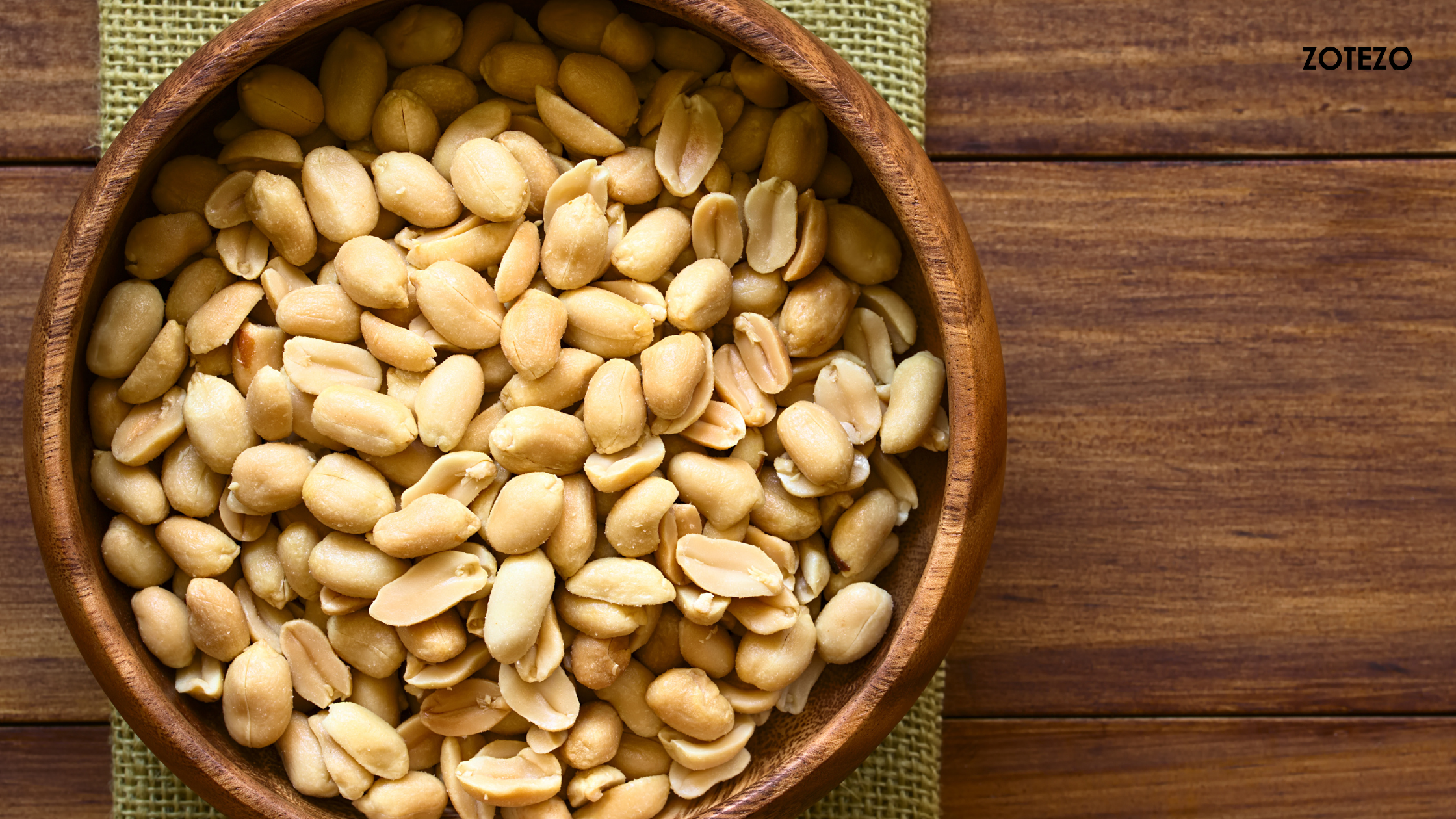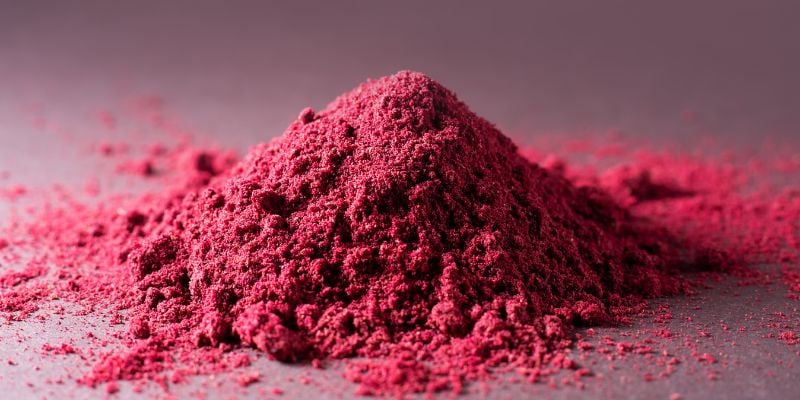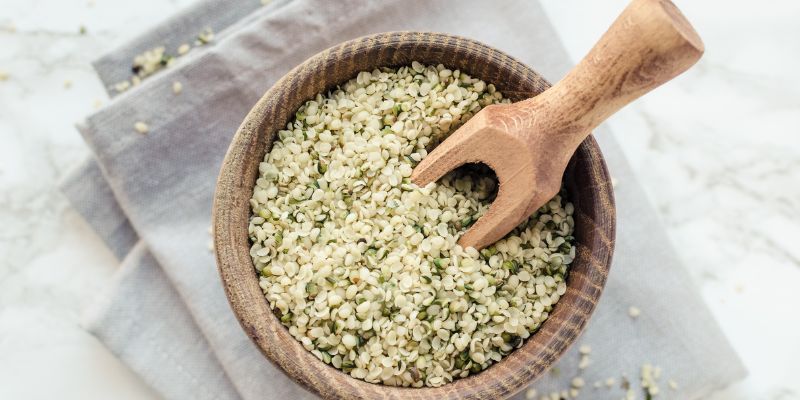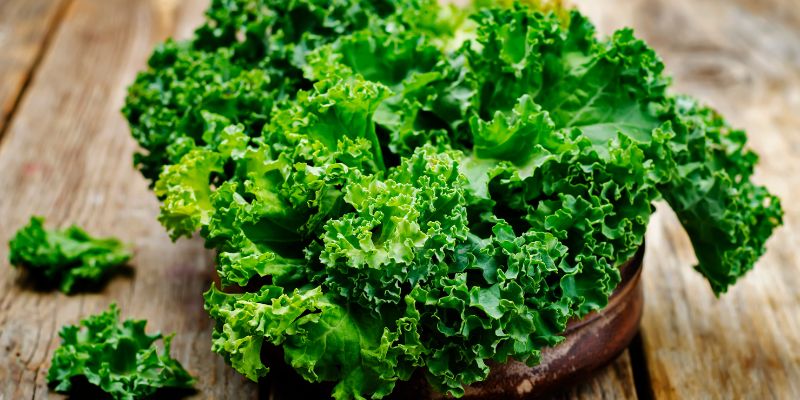Introduction
Peanuts, scientifically known as Arachis hypogaea, are one of the most widely consumed and economically significant legumes worldwide. Although often referred to as nuts, peanuts are botanically classified as legumes because they grow underground as opposed to true tree nuts that grow on trees. Peanuts are native to South America and have been cultivated for thousands of years. These nuts are rich in essential nutrients and a valuable source of protein, healthy fats, vitamins, and minerals. They are a staple in many cuisines worldwide and can be consumed in various forms, including roasted, boiled, as peanut butter, or incorporated into a wide range of dishes, both savory and sweet. So let’s take you on a delicious nutty ride exploring the best peanut in USA.

Tips for choosing the right Peanuts for you
Peanuts are a popular and versatile legume enjoyed by many around the world. Whether you’re purchasing peanuts for snacking, cooking, or baking, here’s a buyer’s guide to help you choose the best quality peanuts:
Peanut types:
There are several types of peanuts available, including:
-
- Runner Peanuts: These are commonly used for peanut butter due to their high oil content.
- Virginia Peanuts: Larger and sweeter, often preferred for roasting and snacking.
- Spanish Peanuts: Smaller and used for making peanut candy and oil.
- Valencia Peanuts: Sweet and usually used for making boiled peanuts
Freshness:
- Fresh peanuts should have a uniform color and texture. They should not have any signs of mold, discoloration, or dark spots. Avoid peanuts that appear wrinkled or shriveled.
- Give the peanuts a sniff. Fresh peanuts should have a slightly sweet and nutty aroma. If the peanuts have a rancid or stale smell, they may not be fresh.
- Feel the peanuts between your fingers. Fresh peanuts should feel firm and not overly dry or soft. If the texture seems off or if they crumble easily, they may be past their prime.
- If possible, taste a few peanuts. Fresh peanuts should have a naturally sweet and nutty flavor. Stale or old peanuts may taste bland or have an off-taste.
Whole vs Shelled Peanuts:
The choice between whole and shelled peanuts depends on your preferences and how you plan to use them. Here are the key differences between whole and shelled peanuts to help you decide:
Whole Peanuts:
- Eating Experience: Whole peanuts are typically enjoyed by cracking open the shell and eating the nut inside. This process can be enjoyable and interactive, especially in social settings or while watching a game or movie.
- Freshness: Peanuts in their shells tend to stay fresher for a more extended period compared to shelled peanuts. The shells act as a protective barrier, reducing exposure to air and moisture.
- Versatility: Whole peanuts are versatile and can be used for snacking, roasting, or cooking. They can also be used in various recipes that require peanuts with the shell intact, such as boiled peanuts.
- Storage: Since whole peanuts have their shells, they are less prone to absorbing odors and flavors from other foods during storage.
Shelled Peanuts:
- Convenience: Shelled peanuts are more convenient for snacking and cooking since the shells are already removed. They are ready to eat without any additional steps.
- Texture: Shelled peanuts have a softer texture and a smoother mouthfeel compared to whole peanuts, making them easier to eat.
- Cooking and Baking: Shelled peanuts are commonly used in cooking, and baking, and as ingredients in various dishes, sauces, and desserts.
- Less Mess: Shelled peanuts eliminate the need to deal with peanut shells, reducing potential mess and waste.
Raw vs Roasted Peanuts:
The choice between raw and roasted peanuts depends on your taste preferences and how you plan to use them. Here are the key differences between raw and roasted peanuts:
Raw Peanuts:
- Natural Flavor: Raw peanuts have a mild, earthy flavor, allowing you to experience the natural taste of the nut itself.
- Versatility: Raw peanuts are versatile and can be used in various recipes, including salads, stir-fries, and baking. They can also be ground into peanut butter or used to make peanut sauces.
- Nutritional Content: Raw peanuts retain their natural nutrients, including healthy fats, protein, vitamins, and minerals.
- Texture: Raw peanuts have a slightly softer texture compared to roasted peanuts.
- Minimal Additives: Raw peanuts are free from added oils, salt, or seasonings, making them an ideal option for those who prefer a more natural snack.
Roasted Peanuts:
- Enhanced Flavor: Roasted peanuts have a richer, nuttier flavor due to the Maillard reaction that occurs during the roasting process. This enhances the taste and aroma of the nuts.
- Crunchy Texture: Roasted peanuts have a crunchy texture, making them a satisfying snack option.
- Storage: Roasted peanuts have a longer shelf life compared to raw peanuts because the roasting process helps preserve them by reducing moisture content.
- Convenience: Roasted peanuts are ready-to-eat and require no additional preparation, making them a convenient snack option.
- Variety of Flavors: Roasted peanuts come in various flavors, such as salted, unsalted, honey-roasted, or seasoned, catering to different taste preferences.
Packaging:
Peanuts are commonly available in various packaging options, such as:
- Bulk bins: For those who prefer to buy in larger quantities.
- Sealed bags: For freshness and convenience.
- Roasted and flavored: Pre-packaged peanuts with various seasonings for snacking.
Storing Peanuts:
Proper storage is essential to maintain the freshness and quality of peanuts. By following these storage guidelines, you can ensure that your peanuts remain fresh and flavorful for an extended period, allowing you to enjoy their nutty goodness in various recipes and as a delicious snack. Remember to check the “best by” or “use by” date on packaged peanuts to consume them before they expire for the best quality and taste.
- In the Shell: If you have peanuts in their shells, store them in a cool, dry place away from direct sunlight. A pantry or kitchen cabinet works well for short-term storage.
- Shelled Peanuts: If you have shelled peanuts, transfer them to an airtight container or a resealable plastic bag to prevent exposure to air and moisture.
- Cool and Dry Environment: Peanuts are sensitive to heat and moisture, which can lead to spoilage or rancidity. Store peanuts in a cool and dry environment to extend their shelf life.
- Avoid the Refrigerator: Peanuts do not require refrigeration, and storing them in the fridge may lead to moisture condensation, which can affect their quality and texture.
- Freezing Option: For long-term storage, peanuts can be kept in the freezer. Place them in an airtight container or a heavy-duty freezer bag to protect them from freezer burn. Properly frozen peanuts can last up to a year without significant loss of quality.
- Roasted Peanuts: If you have roasted peanuts, it’s essential to store them in a similar manner. Roasted peanuts have a higher fat content, making them more susceptible to spoilage if exposed to air and moisture.
- Check for Rancidity: Over time, peanuts can become rancid due to their natural oils. Check for any off odors or unusual tastes before consuming peanuts that have been stored for a long time.
- Keep Away from Strong Odors: Peanuts can absorb strong odors from nearby foods. To preserve their natural flavor, avoid storing peanuts near items with potent aromas.
Allergen information:
Peanuts are one of the most common food allergens, and peanut allergies can be severe, even life-threatening in some cases. Here is essential allergen information for peanuts:
- Allergic Reactions: Peanut allergies can cause a wide range of allergic reactions, ranging from mild to severe. Symptoms may include hives, itching, swelling (especially in the face, lips, tongue, or throat), difficulty breathing, wheezing, vomiting, diarrhea, and in severe cases, anaphylaxis—a severe and potentially life-threatening allergic reaction that requires immediate medical attention.
- Cross-Contamination: Peanuts can sometimes be present in unexpected places due to cross-contamination. This can occur during food processing, where peanuts may be processed on shared equipment with other products, leading to trace amounts of peanuts in those products.
- Reading Labels: When shopping for food items, always read labels carefully to check for potential peanut allergens. Food manufacturers are required to include allergen information on their product labels, including if the product contains peanuts or if it has been processed on shared equipment with peanuts.
- Restaurant and Food Service Safety: When dining out, inform restaurant staff about peanut allergies, so they can take necessary precautions to prevent cross-contamination. Some restaurants have separate allergen menus or allergen information available upon request.
- Hidden Sources: Peanuts can be found in a variety of unexpected food products, such as baked goods, candies, sauces, marinades, and even certain types of chili. Always be cautious and vigilant when trying new foods.
- Peanut Oil and Peanut Derivatives: Some people with peanut allergies may react to peanut oil and peanut derivatives. While refined peanut oil is generally considered safe for most individuals with peanut allergies, cold-pressed or unrefined peanut oil may still contain peanut proteins and should be avoided.
- Airborne Exposure: In rare cases, airborne particles of peanuts can trigger allergic reactions, particularly in extremely sensitive individuals. This can occur in environments with a high concentration of peanut dust or aerosols, such as in factories or roasting facilities.
Products listed here are carefully reviewed and tested by our expert authors and reviewers. If you buy through links on this page, we may earn a small commission. Here’s our editorial process.
How we reviewed these products
Benefits of using Peanuts
The health benefits of peanuts are impeccable and play a monumental role in contributing to the well-being of mankind. Incorporating peanuts into your diet can provide these significant health benefits and support your overall wellness. However, moderation is key, as peanuts are calorie-dense, and excessive intake can lead to weight gain. Consider enjoying peanuts as part of a balanced and varied diet, along with other nutrient-rich foods, to maximize their health benefits and contribute to your overall well-being.
Let’s explore six important health benefits of peanuts in detail from a wellness perspective:
Heart Health:
Peanuts are rich in monounsaturated and polyunsaturated fats, which are considered heart-healthy fats. These fats help lower LDL (bad) cholesterol levels while increasing HDL (good) cholesterol levels, thus reducing the risk of cardiovascular diseases. By incorporating peanuts into your diet, you support heart health and contribute to a healthy cardiovascular system, promoting overall wellness.
Weight Management:
Despite being calorie-dense, peanuts can be beneficial for weight management. The combination of protein, healthy fats, and fiber in peanuts provides a sense of fullness and satiety, which can help control hunger and reduce overall calorie intake. Feeling satisfied after eating peanuts can prevent overeating, leading to better weight management and improved overall well-being.
Blood Sugar Regulation:
Peanuts have a low glycemic index, which means they cause a slower and steadier rise in blood sugar levels compared to high-glycemic foods. This property makes peanuts an excellent option for individuals with type 2 diabetes or those looking to manage blood sugar levels effectively. Stable blood sugar levels are vital for energy levels, mood stability, and long-term health.
Antioxidant Support:
Peanuts contain various antioxidants, such as resveratrol, which help neutralize harmful free radicals in the body. These free radicals can damage cells and contribute to oxidative stress, which is linked to various chronic diseases and premature aging. By consuming peanuts, you support your body’s natural defense against oxidative damage, promoting cellular health and overall well-being.
Digestive Health:
The fiber content in peanuts supports digestive health by promoting regular bowel movements and preventing constipation. A healthy digestive system is essential for nutrient absorption, waste elimination, and overall gut health. Incorporating peanuts into your diet can contribute to a healthy gut, reducing the risk of digestive issues and improving overall wellness.
Brain Function:
Peanuts contain nutrients like vitamin E and niacin, which are beneficial for brain health and cognitive function. Vitamin E acts as an antioxidant in the brain, protecting it from oxidative stress, while niacin plays a role in maintaining healthy brain cells. A healthy brain is crucial for cognitive abilities, memory, and emotional well-being.
Side-effects of using Peanut
While peanuts are a nutritious and delicious food for most people, they can cause side effects or allergic reactions in some individuals. Here are some potential side effects of using peanuts:
Allergic Reactions:
Peanut allergy is one of the most common food allergies, and it can cause a wide range of allergic reactions, ranging from mild to severe. Symptoms may include skin reactions like hives or itching, gastrointestinal symptoms like nausea, or vomiting, respiratory symptoms like coughing or wheezing, and in severe cases, anaphylaxis—an acute and potentially life-threatening allergic reaction that requires immediate medical attention.
Gastrointestinal Discomfort:
Some people may experience digestive issues after consuming peanuts, such as bloating, gas, or diarrhea. This could be due to the high fiber content or the presence of certain compounds in peanuts.
Weight Gain:
Peanuts are calorie-dense and high in fat, so excessive consumption without considering portion size can lead to weight gain.
Aflatoxin Contamination:
Peanuts are susceptible to contamination with aflatoxin, a naturally occurring toxin produced by certain molds. Consuming high levels of aflatoxin over time may increase the risk of liver damage and certain cancers. To minimize aflatoxin exposure, it’s essential to store peanuts properly and consume them in moderation.
Peanut Agglutinins:
Peanuts contain lectins known as peanut agglutinins, which can cause digestive disturbances in some individuals. Lectins are natural plant compounds that can interact with the lining of the gut and cause irritation.
Choking Hazard:
Whole peanuts, especially for young children, can pose a choking hazard due to their size and shape. It’s best to avoid giving whole peanuts to young children and serve them peanut butter or finely chopped peanuts instead.
Who should use Peanuts
Peanuts’ protein, fiber, and good fats can help control blood sugar levels and reduce the likelihood of sharp rises in glucose following meals. For those who already have diabetes or are at risk of getting it, this may be helpful. Also, as they increase heart blood circulation, peanuts may lower overall cholesterol.
Recommended Dosage of Peanut
Remember, while peanuts offer numerous health benefits, consuming them in excess can lead to weight gain and potential health issues. Always listen to your body and pay attention to how you feel after eating peanuts. The recommended dosage of peanuts can vary depending on individual dietary needs, health conditions, and personal preferences. Peanuts are calorie-dense and relatively high in fat, so portion control is essential to avoid excessive calorie intake.
Here are some general guidelines for consuming peanuts:
- Moderation: Peanuts are best enjoyed in moderation as part of a balanced diet. A small serving of peanuts can be a satisfying and nutritious snack.
- Nutritional Value: A standard serving size of peanuts is about 1 ounce (28 grams), which is roughly equivalent to a small handful or two tablespoons of peanut butter.
- Caloric Content: One ounce of peanuts provides around 160-170 calories, so it’s essential to be mindful of portion sizes, especially if you are watching your caloric intake.
- Health Considerations: Individuals with peanut allergies should avoid peanuts altogether. If you have specific health conditions, such as kidney disease or gallbladder issues, consult with a healthcare professional or registered dietitian to determine a suitable serving size based on your unique needs.
- Added Ingredients: Be cautious with flavored or seasoned peanuts, as they may contain additional calories, sugars, or sodium.
- Peanut Butter: If you enjoy peanut butter, stick to the recommended serving size, typically 1 to 2 tablespoons. Opt for natural peanut butter with minimal added ingredients.
- Incorporate into Meals: Peanuts can be incorporated into various meals and recipes to add flavor, texture, and nutrition. Use them as a garnish in salads, stir-fries, or sprinkle them on yogurt for added crunch.
How to consume Peanut
Peanuts are versatile and delicious ingredients that can be used in various ways in cooking, baking, and snacking. Here are some popular ways to use peanuts:
Snacking:
- Roasted Peanuts: Enjoy roasted peanuts as a satisfying and crunchy snack on their own or mixed with other nuts and dried fruits for a trail mix.
- Peanut Butter: Spread peanut butter on toast, crackers, or use it as a dip for fruits and vegetables.
Cooking:
- Peanut Sauce: Make a savory peanut sauce for stir-fries, noodles, or grilled meats.
- Peanut Soup: Use peanuts to thicken and add flavor to soups and stews.
- Peanut-Coated Dishes: Use crushed or ground peanuts to coat chicken, fish, or tofu for a deliciously crunchy crust.
Baking:
- Peanut Cookies: Incorporate peanuts into cookie recipes for added texture and flavor.
- Peanut Brittle: Make a classic peanut brittle candy by mixing peanuts with caramelized sugar.
Peanut Butter Recipes:
- Peanut Butter Cookies: Bake delicious peanut butter cookies with peanut butter as the main ingredient.
- Peanut Butter Cups: Make your own peanut butter cups by layering melted chocolate and peanut butter in small molds.
Asian and African Cuisine:
- Pad Thai: Use crushed peanuts as a garnish for the popular Thai dish, Pad Thai.
- African Groundnut Stew: Prepare a flavorful African stew with peanuts as a key ingredient.
Salads:
- Peanut Dressing: Blend peanuts with other ingredients to create a creamy and nutty salad dressing.
- Garnish: Sprinkle crushed peanuts on top of salads for added crunch and flavor.
Dips and Sauces:
- Peanut Hummus: Combine peanuts with chickpeas to make a unique and delicious peanut hummus.
- Satay Sauce: Create a mouthwatering satay sauce for dipping grilled meats or vegetables.
Peanut Toppings:
- Ice Cream Topping: Crush peanuts and sprinkle them over ice cream for a delightful topping.
- Yogurt: Add chopped peanuts to yogurt for an extra crunch and nutty flavor.
Understand the who, what & why behind your favourite products
Brand Values | Product Philosophy | Product USPs
Read brand stories, their raison-d'etre, and understand what drives them to caringly create the highest quality products for your well-being.
Brand stories
Frequently asked questions on Peanuts
1. Are peanuts nuts or legumes?
2. Do peanuts contain healthy fats?
3. Are peanuts a good source of protein?
4. Are peanuts gluten-free?
5. Do peanuts contain healthy fats?
6. Can peanuts help with weight management?
7. How should peanuts be stored to maintain freshness?
8. Are roasted peanuts as nutritious as raw peanuts?
9. Can peanuts be included in a heart-healthy diet?
Expert reviews you can rely upon
Expert Insights | Product Reviews | Connect with Experts
Gain valuable insights and read unbiased product reviews by subject matter Experts on Zotezo, the ultimate trust commerce platform, that empowers millions globally to make informed decisions for their wellbeing.
Expert Advisory
Conclusion
In conclusion, peanuts are a versatile and nutritious legume that provides numerous health benefits when incorporated into a balanced diet. These small nuts are packed with essential nutrients, including protein, healthy fats, fiber, vitamins, and minerals, making them a valuable addition to any meal plan. For individuals concerned about blood sugar regulation, peanuts have a low glycemic index, making them a suitable option for those with diabetes or looking to manage blood sugar levels effectively.
Overall, the best peanut in USA can be a delicious and beneficial part of a balanced diet, enhancing meals with their nutty flavor and providing essential nutrients that contribute to overall well-being. As with any food, incorporating peanuts mindfully and in moderation can lead to a satisfying and nourishing dietary experience.




